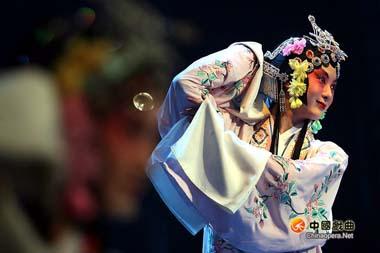Chinese Opera Costume
2009-06-19 17:25 BJT
When you enter a Chinese Opera theater, the first thing you will notice is a brilliant, lavishly embroidered hanging. Performers will then stride on stage to the sound of strings and woodwinds, or to the clanging of gongs and drums.
 |
First may be a handsome, sturdy young man in warrior garb,omersaulting across stage and displaying his martial skills. Next may follow a young woman veiled by strings of pearls and dressed in silk brocade, singing in a gentle, feminine voice and performing a billowing dance. Then there is the famous Monkey King Sun Wu-k'ung, of the opera journey to the West, with his twitching, scratching, and mischievous simian antics. These characters are all representative of China's traditional National Opera, or Peking Opera.
The costumes worn in Chinese Opera performances are broadly based on the dress current in China about four centuries ago, during the Ming Dynasty. Exaggerated flowing sleeves, pennants worn on the backs of military officers, and pheasant feathers used in headwear were added to heighten the dramatic effect of the stage choreography. These extra touches bring out the various levels of gestures and the rhythm of the movement. Like facial make-up, Chinese Opera costumes tell much about the character wearing them, while also being aesthetically appealing. In the past, Chinese Opera singers would rather wear a worn and torn costume than one that did not correctly represent the character he was portraying.

 Mail
Mail Share
Share Print
Print


 Video
Video









 2009 China Central Television. All Rights Reserved
2009 China Central Television. All Rights Reserved